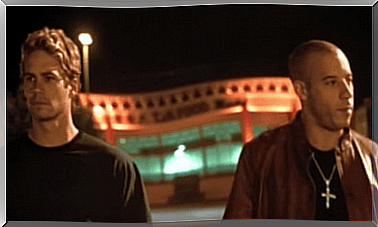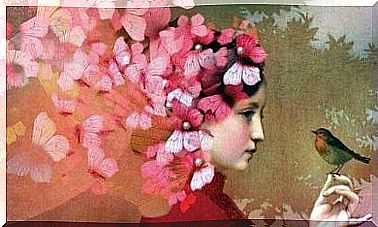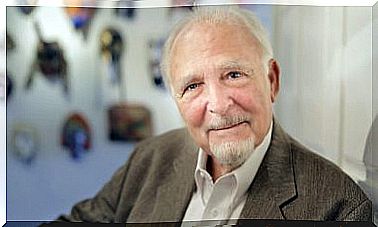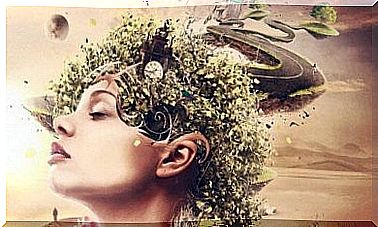Edward Scissorhands: Story About Acceptance

Edward Scissorhands , directed by Tim Burton in 1990 and starring very young Johnny Depp and Winona Ryder, is for many the director’s masterpiece. His soundtrack, composed by Danny Elfman, stands out.
The aesthetics of the film Edward Scissorhands draw attention, with objects taken from other works by the director, such as Nightmare Before Christmas (1993). Taking the first steps inside the film, the image of an ancient dusty and at the same time magical building, already anticipates that we are inside the purest “Burton Universe”.
In the form of a story, almost a fairytale, mixing fantasy with everyday life, Burton presents us with a film full of emotions and feelings. It creates a story in which two messages stand out: the importance of accepting differences and the importance of abandoning prejudices.
Edward Scissorhands is a very personal narrative, in an autobiographical key, even if it presents itself as a fantasy. Burton himself spoke several times about some problems in childhood. In fact, he has always described himself as lonely or even “strange”. His ex-wife, Helena Bonham Carter, also recognized some characteristics of Asperger’s syndrome in him.
Edward Scissorhands : a story full of contrasts
Burton presents the film as the tale of an elderly woman to her niece from which we enter the imagination. It all starts in a colorful neighborhood full of gardens and family houses. There is no car, no door, no black garment in the whole neighborhood. Among all this color, an old palace, practically in ruins, stands out on the bottom, on top of a hill; gray and black, with an aspect that is very reminiscent of German expressionist cinema.
The first character we know is Peg, a mother of two who works for the Avon cosmetics company. In a desperate attempt to sell his products, Peg decides to enter the mysterious palace. Upon his arrival, he encounters strange trees that have been pruned to imitate shapes of animals and humans.
The palace, which seemed so dark in the distance, presents itself with a splendid and colorful garden completely unexpected, which acts as a signal of the extraordinary inner world of its inhabitant. Music plays a key role as Peg enters the palace.
Surely Peg expected to come face to face with something scary, creepy. However, he finds himself in a magical and wonderful atmosphere, with sculptures full of sensitivity. The palace is totally neglected inside, full of dust and cobwebs. You can see newspaper clippings pasted on a wall, where you can read headlines such as “Child born without eyes reads with his hands”. Shortly after we meet Edward, the strange inhabitant, who has an unexpected peculiarity: he has scissors instead of hands.

Contact with the world and social relations
From the start, Edward exhibits extreme innocence. He does this when he refers to his father as “he never woke up”, in clear reference to his ignorance of the world, life and death. Peg, fascinated by the scars that her own scissors have given him, decides to try her cosmetic products and invites him home.
From this moment on, we witness all of Edward’s difficulties in living in society, in distinguishing good from evil; the deep rejection he initially generates among the neighbors, and their subsequent fascination when they discover that they can take advantage of his skills as a gardener and hairdresser. The neighbors represent morbid curiosity in its pure state, they stage collective thinking and are the faithful reflection of how this idea changes according to circumstances, so that their opinion of Edward is not individual, but collective.
Burton shows us how difficult it is to be accepted when you are not like others. Edward came out of curiosity in some and fear in others, we see how the neighbors are dedicated to commenting on everything that happens in the neighborhood, to spread rumors, to criticize Peg and his strange tenant.
Edward fits well into Peg’s family, managing to establish an excellent relationship with her young son and her husband. However, when he meets Kim, his teenage daughter, certain feelings awaken in Edward, but he is unable to express them. The relationship with Kim is difficult at first due to her prejudices, but over time she will see in Edward the person he really is and the big heart he has.
Edward begins to arouse admiration among neighbors for his skills as a hairdresser and gardener, his popularity increases and they even offer him to open a beauty salon. Edward and Peg are invited to join a television program explaining Edward’s case, while the audience comments and asks questions. It is curious how at this moment we see that when the strange becomes an attraction, it generates charm. Edward is no different, he is special.

What is “different” is frightening
Conflicts return when Edward agrees to help Kim and her boyfriend commit a criminal act. From this moment, society begins to see him as a monster, to be eliminated because he is dangerous. The neighbors who admired his talent so much are now afraid, they make up stories about him and want to see him dead.
There is a moment, a little habit to highlight. It is a scene where Edward is chased by the whole neighborhood, he is alone, everyone wants to see him dead… But a dog sits next to him. He cuts off his bangs so he can see better and the animal shows him appreciation. This little moment is truly magical, here Burton shows how prejudice is unknown to animals, which can sometimes be more understanding than many people.
Burton presents a character devoid of evil, with social problems because he has lived in isolation for too long due to his particular condition. There are few who see Edward as a good and innocent man. The palace is a reflection of that personality, with large, imposing and dark doors serving as armor to protect the magical garden full of sensitivity.
Much has been said about Burton and Asperger’s, and it’s hard to know for sure what the director’s childhood and life were like. But we can appreciate some characteristics of this syndrome in Edward’s character, such as his clumsiness with his hands, his adjustment problems and his deep inner world. There is no doubt that Edward Scissorhands leaves us a wonderful lesson in acceptance, teaches us not to be afraid of other sensitivities and to look deeper into people’s inner selves.









